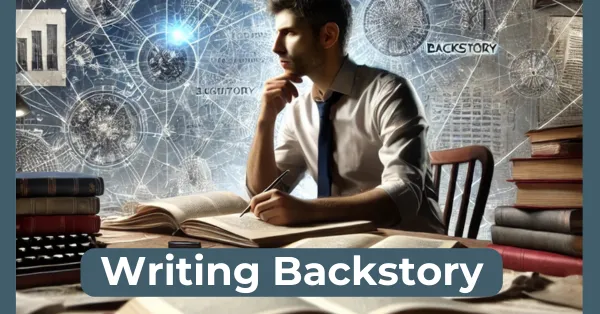Thanks for following our blog. You may browse the entries or search by category or topic.

What I Learned from KM Weiland on Writing Backstory
Introduction
Writing your first novel can be a daunting task—I've been there myself, struggling with the basics of the craft. As I moved on to write book #2 and further entries in my crime thriller series, a new question arose: how much of the previous books' backstory should I share? I know many of you face the same challenge, whether you're crafting a standalone book or diving into a long-running series.
“Never share backstory with your audience until absolutely necessary.” KM Weiland
Background
Balancing backstory is a true tightrope act. For instance, in my second crime thriller, I struggled to determine how much of my protagonist’s history from book #1 I should reintroduce. I learned that new readers might be left with gaps in their understanding if I gave too little context, while loyal readers could feel frustrated if I rehashed old material.
Getting this balance right takes time and practice. Dealing with backstory is one of the largest challenges I have faced as a writer, and it has taken several books and numerous writing exercises to develop my approach. In fact, even in writing this blog post, I had to decide how much of my journey to share with you about my experience with backstory!
Call to Action
So, how can you master the backstory challenge? I encourage you to explore KM Weiland’s extensive writing craft articles that have helped me and many other authors. Spend just 30 minutes reviewing her three-part series on backstory—it's an investment in your storytelling skills that will pay off when readers get hooked by your characters.
Here are the links to her three-part blog posts on techniques for writing backstory:
Prologues Versus Flashbacks (Part 1 on Backstory Techniques)
Backstory-As-Story Versus Alternating Timelines (Part 2 on Backstory Techniques)
Backstory Drip (Part 3 on Backstory Techniques)
She’s also written several previous posts regarding backstory such as:
After reading, I'd love to hear your thoughts: do you prefer using prologues or flashbacks to introduce backstory?
Key Takeaways
Always introduce backstory only when it’s essential to the story at hand.
Balance is key—too little can confuse new readers, while too much frustrates returning fans.
Consider prologues, flashbacks, or "drip" backstory techniques, as expertly discussed by KM Weiland.
Upcoming Blogs and Other Resources
In upcoming blogs, I'll focus on helping you sharpen your craft skills and navigate the world of writing tools like Plottr, Scrivener, Notion, and ProWritingAid. Plus, I'll offer tips on managing the writing lifestyle, which can feel quite challenging at times! Keep an eye out for more practical advice to enhance both your writing and your well-being as an author.
Don't forget to check out our Writing Apps page to see which tools could make your writing journey smoother. Let’s embark on this journey of improvement together.
Check out our Writing Apps page for the writing tools we use and recommend: Writing Apps
Note: There are affiliate links within this blog post to products and services that I recommend and use personally. This means that I receive a small percentage of sales commission with no extra cost to you and in some cases, you may receive a discount for using my links. I only recommend products and services that I believe are great for authors and other creatives. For more information, you may check out our Affiliate Marketing Policy, which can be found on this page’s footer or by clicking on the just-previous link.
"Enhancing your knowledge, sharpening your skills,
and improving your craft word by word -- or blog by blog!"
Steve Shipley: Author and founder of InkIT Publishing
Designed by InkIT Publishing Pty Ltd.
© 2024. All rights reserved.

